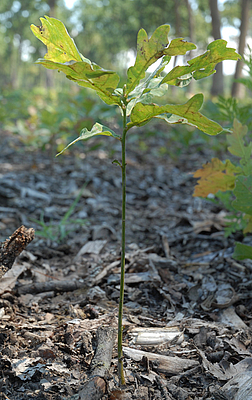
It is a misconception that the best way to protect a forest is to leave it alone – and with climate change gathering pace and the world’s population rising, active forest management is more important than ever.
Forests cover roughly one third of the world’s land area and provide vital environmental services such as climate regulation, soil protection and water management. They also produce food and raw materials, which sustain hundreds of millions of people and support economies.
The world is changing.
Temperatures are predicted to rise, due to climate change, and forests need to keep pace with this change. To ensure they do, it is vital to conserve forest genetic resources, the inherent genetic material that exists within a species and forms the base for adaptation.
According to The State of the World’s Forest Genetic Resources – which was published by the FAO in 2014 and was the first report of its kind – in the 86 countries it collected data for, roughly half of the forest species were found to be threatened or subject to genetic erosion. Active forest management, says the FAO, would help prevent further genetic erosion.
The general perception, outside the professional realm associated with the conservation and sustainable management of forest genetic resources, dismisses the idea of active forest management, claiming Nature can find its own way.
The world’s ecosystems were formed long before man came along and they have a proven ability to adapt, therefore the arguments in favour of a hands-off approach are not unreasonable. However, climate change is altering the balance of the natural world so fast that some tree species and populations will struggle to survive and will not be able to keep up with the pace of change. These changes are likely to accelerate this century meaning vulnerable species and populations will require active management if they are to endure.
There are also other factors to consider before rejecting active management. Firstly, people assume that European forests have a high degree of naturality, but in many cases they have been significantly altered by man. It is important to acknowledge that mankind has changed the genetic makeup of the world’s forests: in some regions, deforestation has depleted forest genetic resources to the extent that they are less well equipped to adapt to climate change.
Another point to consider is how the historic movement of forest reproductive material – seeds, cuttings and planting stock – of certain tree species has altered the natural gene pool of many of Europe’s forests. This has happened globally, as highlighted in The State of the World’s Forest Genetic Resources.
Making informed decisions

The European Forest Genetic Resources Programme (EUFORGEN) argues that to ensure the adaptability of forests, it is important to characterize and conserve a sizeable amount of the adaptive genetic variation that currently exists in tree populations. This data can be used to make informed decisions about the management of forests.
“Efforts should be made to identify the most vulnerable tree populations and species”, says Dr. Michele Bozzano, coordinator of EUFORGEN. These are likely to be those on the edge of their distribution range or those living at their environmental limits.
Active management of genetic conservation units may be necessary to mitigate the effects of climate change and favour genetic processes that maintain the long-term viability of tree populations. Management may focus on improving growth and reproduction on site, as well as reducing competition between target species and other plants (including invasive plant species) and shortening regeneration time. It could also include ex situ measures, such as moving populations from vulnerable locations to more suitable areas.
A key aspect of active forest management is to ensure that regeneration of the species takes place within the genetic conservation units, as indicated in guidelines set by a group of international experts, who contributed to the design of a dynamic system of conservation units in Europe (EUFGIS).
These guidelines, the Pan-European minimum requirements for the inclusion of genetic conservation units of forest trees into a European database, nurtured by 34 countries, indicate that management measures should be applied in such a way that they support reproductive processes and result in adequate regeneration of the target tree species.
Furthermore, management practices applied within a unit should also be adapted to protect the tree population(s) against strong environmental changes and extreme weather events. Different selective cutting and regeneration techniques could be used within and among the units, in order to promote different patterns of mating among tree individuals.
While recognizing that in some cases a hands-off approach could be the right thing to do (for example when regeneration is sufficient, health conditions are optimal, and the conservation unit is sufficiently diverse with regard to environmental variation), the scientific and professional community is broadly supporting the case for active management.
